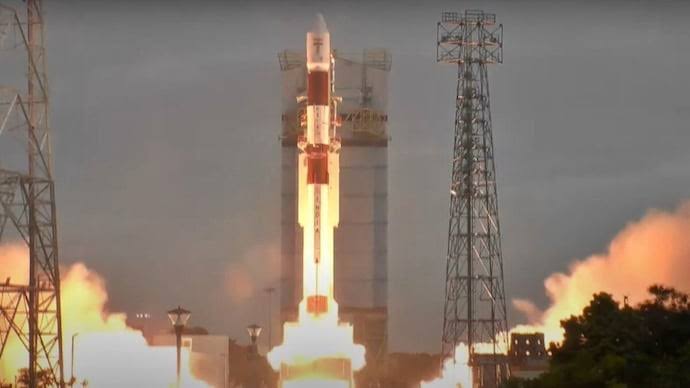The Indian Space Research Organisation (ISRO) launched the Polar Satellite Launch Vehicle (PSLV-C56), from the Satish Dhawan Space Centre in Sriharikota, Andhra Pradesh. The launch took place at 6:30 am from the first launch pad.
The primary payload of the PSLV-C56 mission is the DS-SAR satellite, a Synthetic-aperture radar (SAR) that creates two-dimensional images or three-dimensional reconstructions of objects.

Developed under a partnership between DSTA, representing the Government of Singapore, and ST Engineering, the DS-SAR satellite will cater to the imagery needs of various Singapore government agencies and ST Engineering’s commercial customers.
The DS-SAR satellite, weighing 360 kg, is being sent into a Near-equatorial Orbit (NEO) at an altitude of 535 km.
It carries a SAR payload developed by Israel Aerospace Industries (IAI), enabling all-weather day and night coverage and capable of imaging at 1m-resolution at full polarimetry.
This high-resolution capability will allow the Singapore government to assess damage caused by natural disasters, monitor land use, track deforestation, and support security and defense operations. Commercial customers can utilize the satellite for purposes such as oil and gas exploration, agriculture monitoring, and infrastructure assessment.
Alongside the DS-SAR, six co-passenger satellites have also hitched a ride to space. These include VELOX-AM, a technology demonstration microsatellite; ARCADE, an experimental satellite for atmospheric coupling and dynamics exploration; SCOOB-II, a nanosatellite flying a technology demonstrator payload; NuLIoN by NuSpace, an advanced nanosatellite enabling seamless IoT connectivity in both urban & remote locations; Galassia-2, a nanosatellite orbiting at low earth orbit; and ORB-12 STRIDER, a satellite developed under international collaboration.
The PSLV-C56 mission not only showcases India’s prowess in space technology but also strengthens international collaborations in space research.
👉 Click here to read the latest Gujarat news on TheLiveAhmedabad.com



